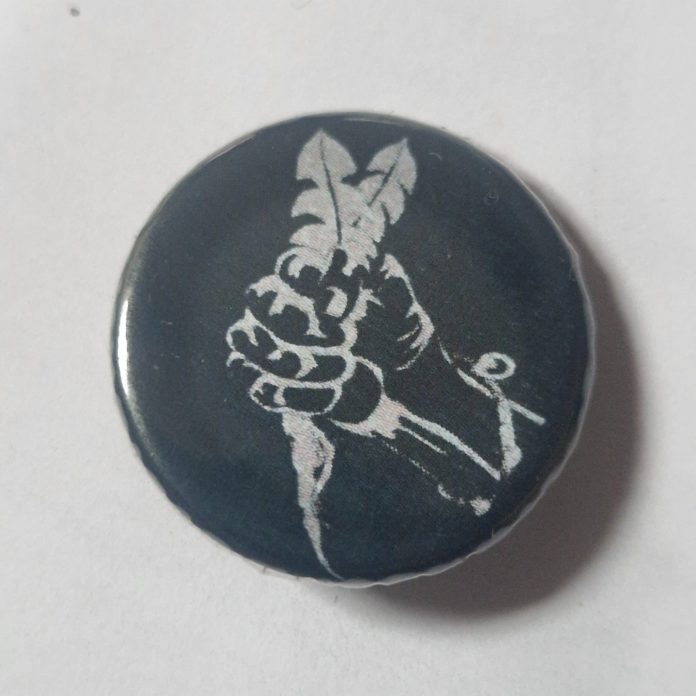400, Racoon
£0.45
The Racoon, so popular at the 56a Infoshop it vies with the rat as our symbol of animal resistance!
Description
Raccoons and people
Conflicts
The increasing number of raccoons in urban areas has resulted in diverse reactions in humans, ranging from outrage at their presence to deliberate feeding. Some wildlife experts and most public authorities caution against feeding wild animals because they might become increasingly obtrusive and dependent on humans as a food source. Other experts challenge such arguments and give advice on feeding raccoons and other wildlife in their books. Raccoons without a fear of humans are a concern to those who attribute this trait to rabies, but scientists point out that this behavior is much more likely to be a behavioral adjustment to living in habitats with regular contact to humans for many generations. Although serious attacks on humans by groups of non-rabid raccoons are extremely rare, at least one such attack has been documented. Raccoons usually do not prey on domestic cats and dogs, but individual cases of killings have been reported.
While overturned waste containers and raided fruit trees are just a nuisance to homeowners, it can cost several thousand dollars to repair damage caused by the use of attic space as dens. Relocating or killing raccoons without a permit is forbidden in many urban areas on grounds of animal welfare. These methods usually only solve problems with particularly wild or aggressive individuals, since adequate dens are either known to several raccoons or will quickly be rediscovered. Loud noises, flashing lights and unpleasant odors have proven particularly effective in driving away a mother and her kits before they would normally leave the nesting place (when the kits are about eight weeks old). Typically, though, only precautionary measures to restrict access to food waste and denning sites are effective in the long term.
Amongst all fruits and crops cultivated in agricultural areas, sweet corn in its milk stage is particularly popular among raccoons. In a two-year study by Purdue University researchers, published in 2004, raccoons were responsible for 87% of the damage to corn plants. Like other predators, raccoons searching for food can break into poultry houses to feed on chickens, ducks, their eggs or feed. Since they may enter tents and try to open locked containers on camping grounds, campers are advised to not keep food or toothpaste inside a tent.
Since raccoons are able to increase their rate of reproduction up to a certain limit, extensive hunting often does not solve problems with raccoon populations. Older males also claim larger home ranges than younger ones, resulting in a lower population density. The costs of large-scale measures to eradicate raccoons from a given area for a certain time are usually many times higher than the costs of the damage done by the raccoons.
Mythology, arts and entertainment
In the mythology of the indigenous peoples of the Americas, the raccoon was the subject of folk tales. Stories such as How raccoons catch so many crayfish from the Tuscarora centered on its skills at foraging. In other tales, the raccoon played the role of the trickster who outsmarts other animals, like coyotes and wolves. Among others, the Dakota Sioux believed that the raccoon had natural spirit powers, since its mask resembled the facial paintings, two-fingered swashes of black and white, used during rituals to connect to spirit beings. The Aztecs linked supernatural abilities especially to females whose commitment to their young was associated with the role of wise women in the tribal society.
The raccoon also appears in Native American art across a wide geographic range. Petroglyphs with engraved raccoon tracks were found in Lewis Canyon, Texas; at the Crow Hollow Petroglyph site in Grayson County, Kentucky and in river drainages near Tularosa, New Mexico and San Francisco, California. A true to detail figurine made of quartz stone, the Ohio Mound Builders’ Stone Pipe, was found near the Scioto River. The meaning and significance of the Raccoon Priests Gorget which features a stylized carving of a raccoon and was found at the Spiro Mounds, Oklahoma, remains unknown.
In Western culture, several autobiographical novels about living with a raccoon have been written, mostly for children. The best-known is Sterling North’s Rascal, which recounts how he raised a kit during World War I. In recent years, anthropomorphic raccoons played main roles in the animated television series The Raccoons, the computer-animated film Over the Hedge and the video game series Sly Cooper.





